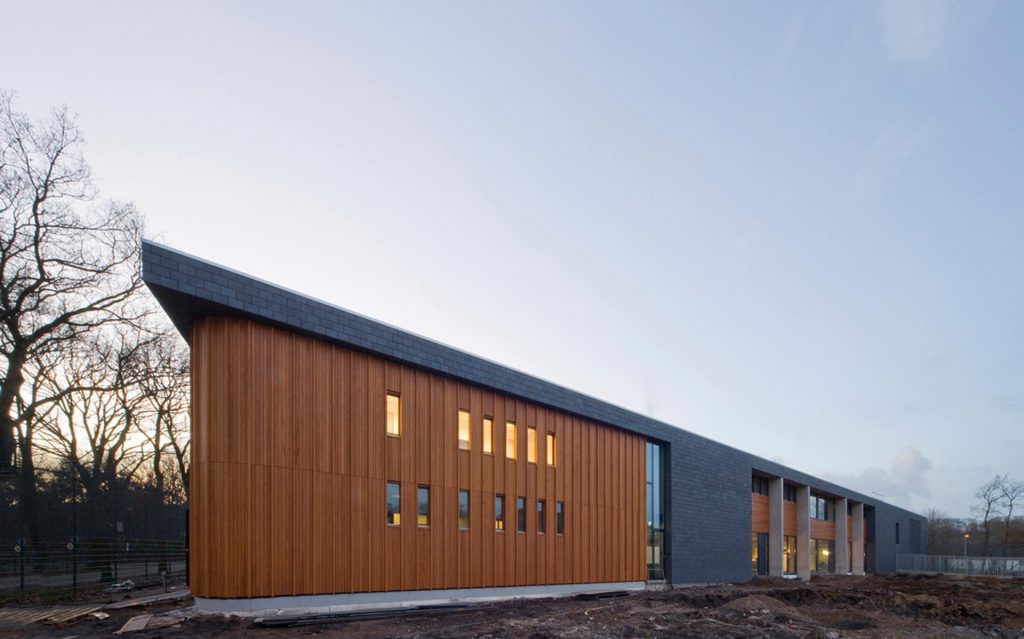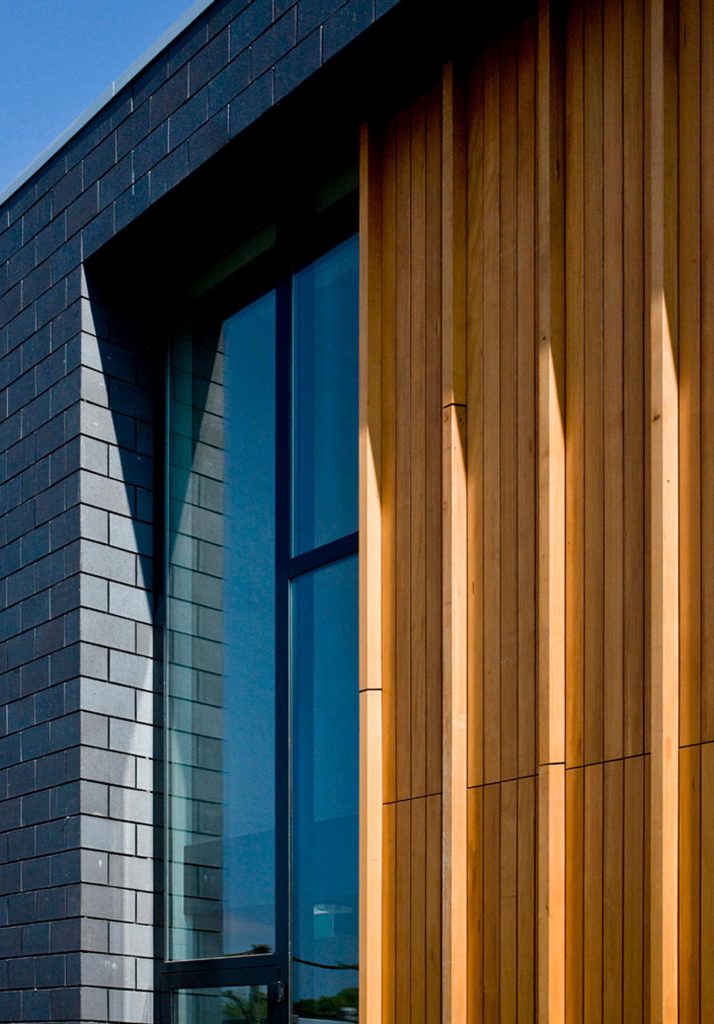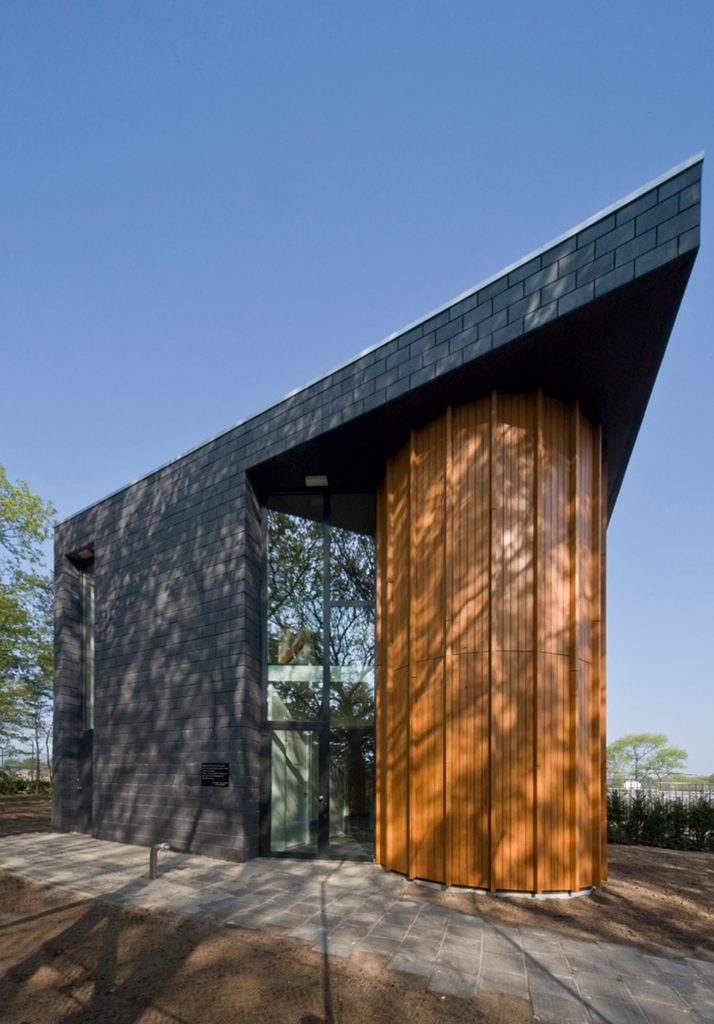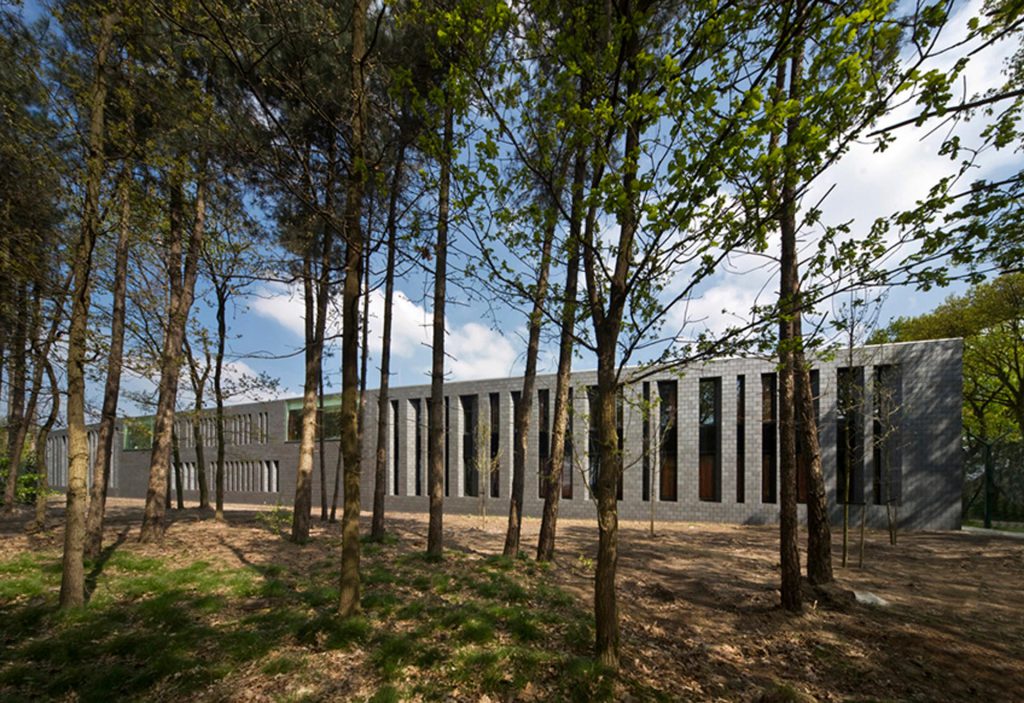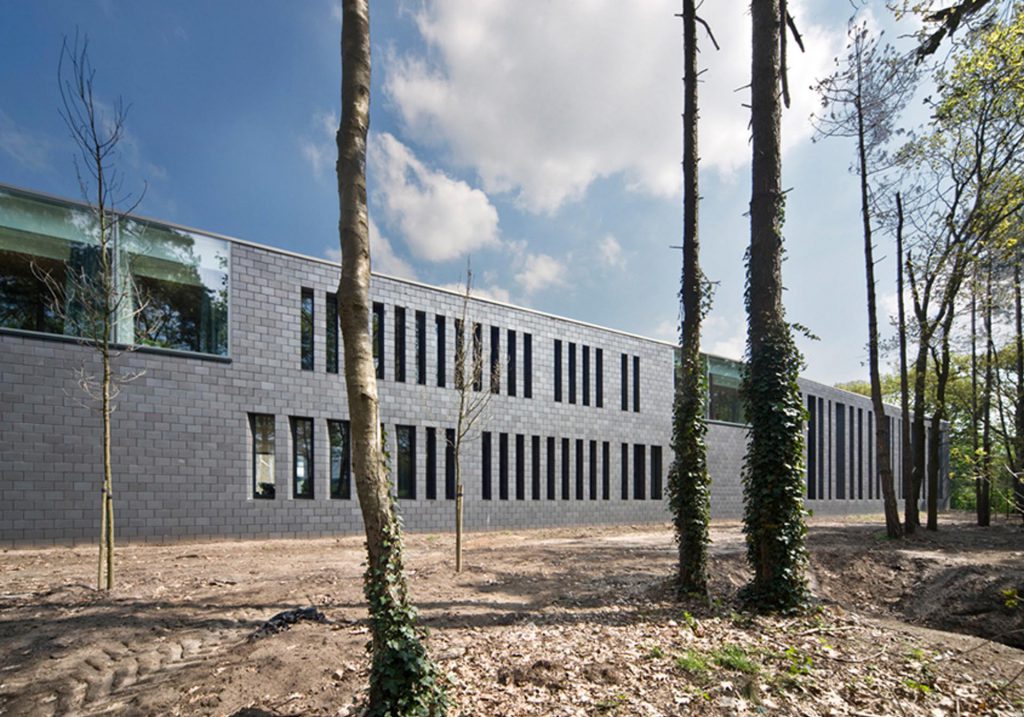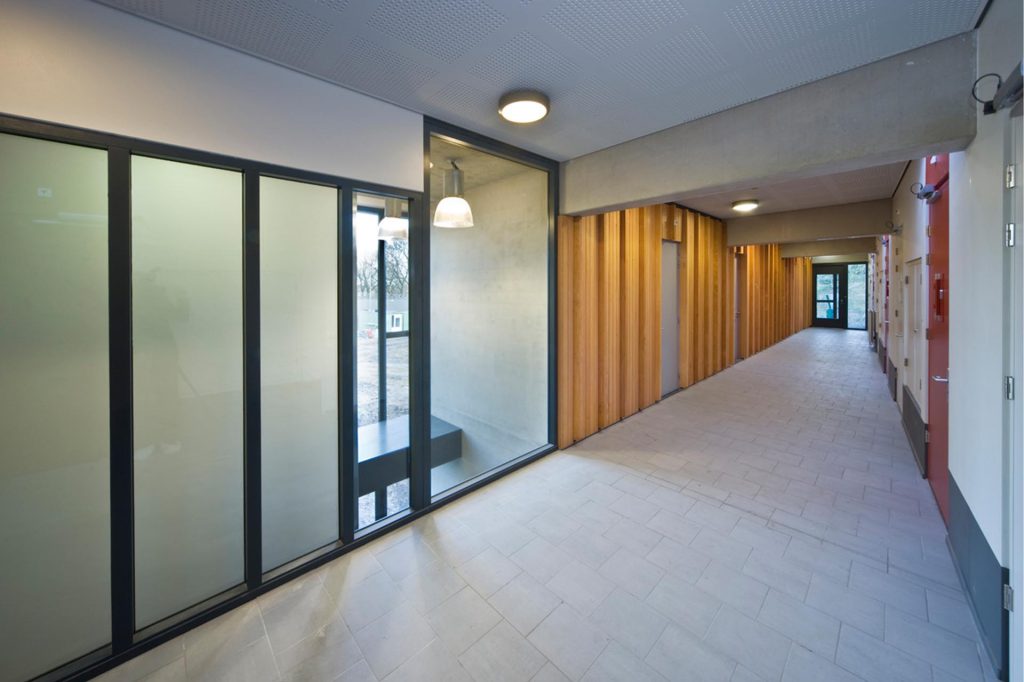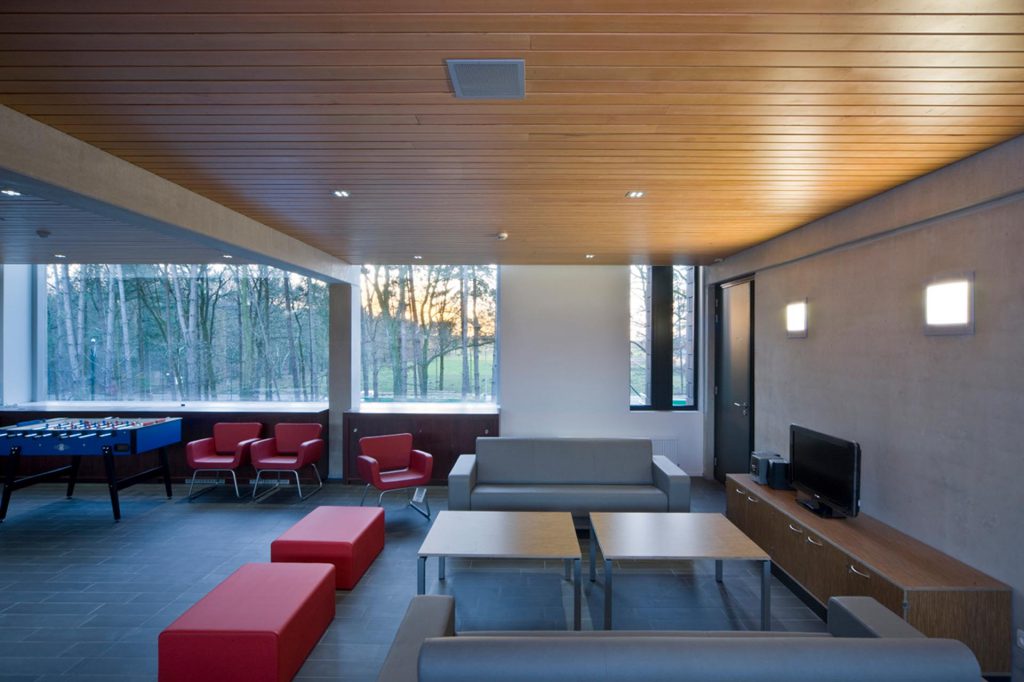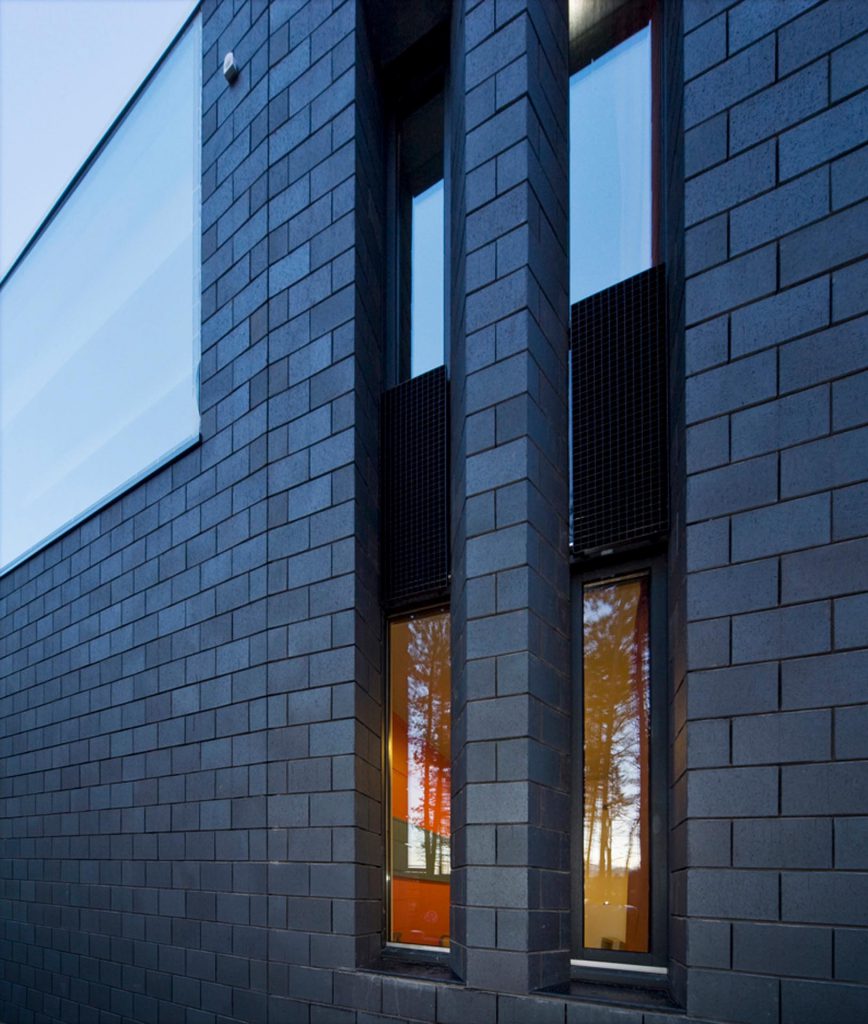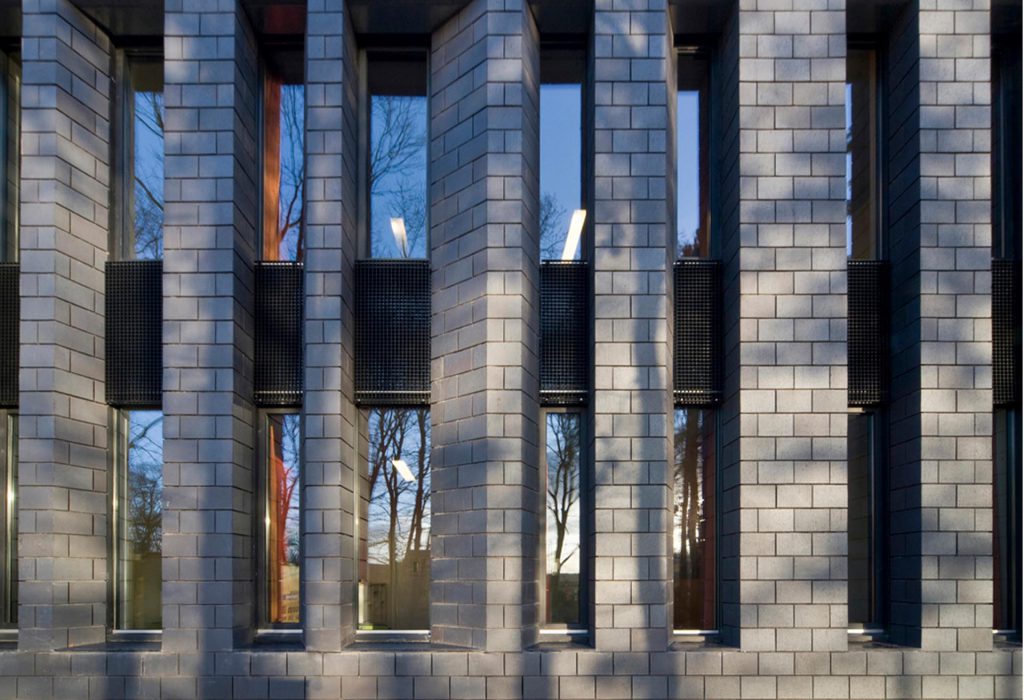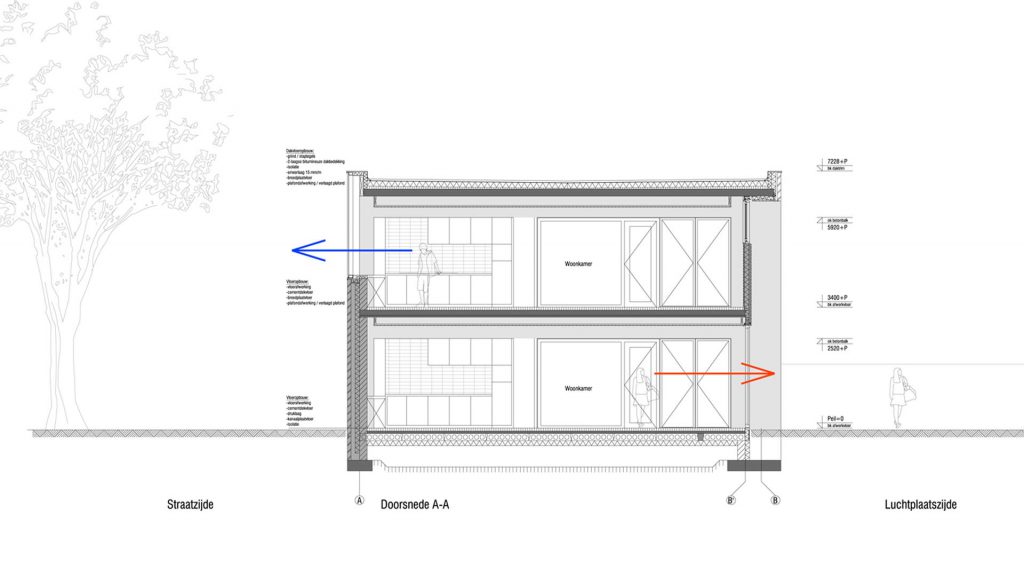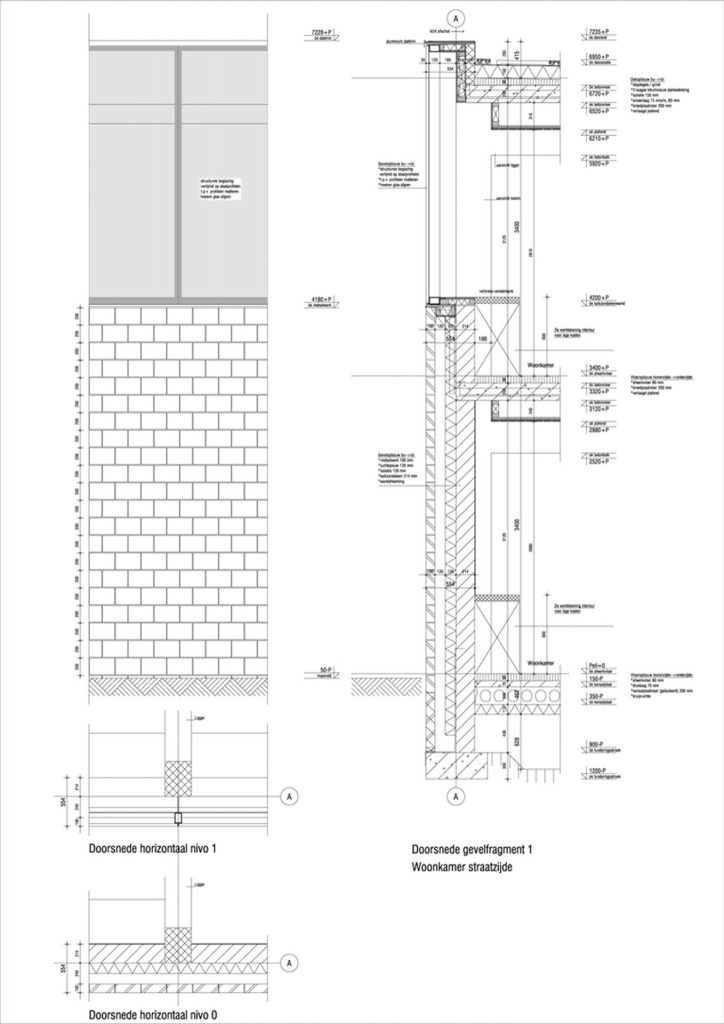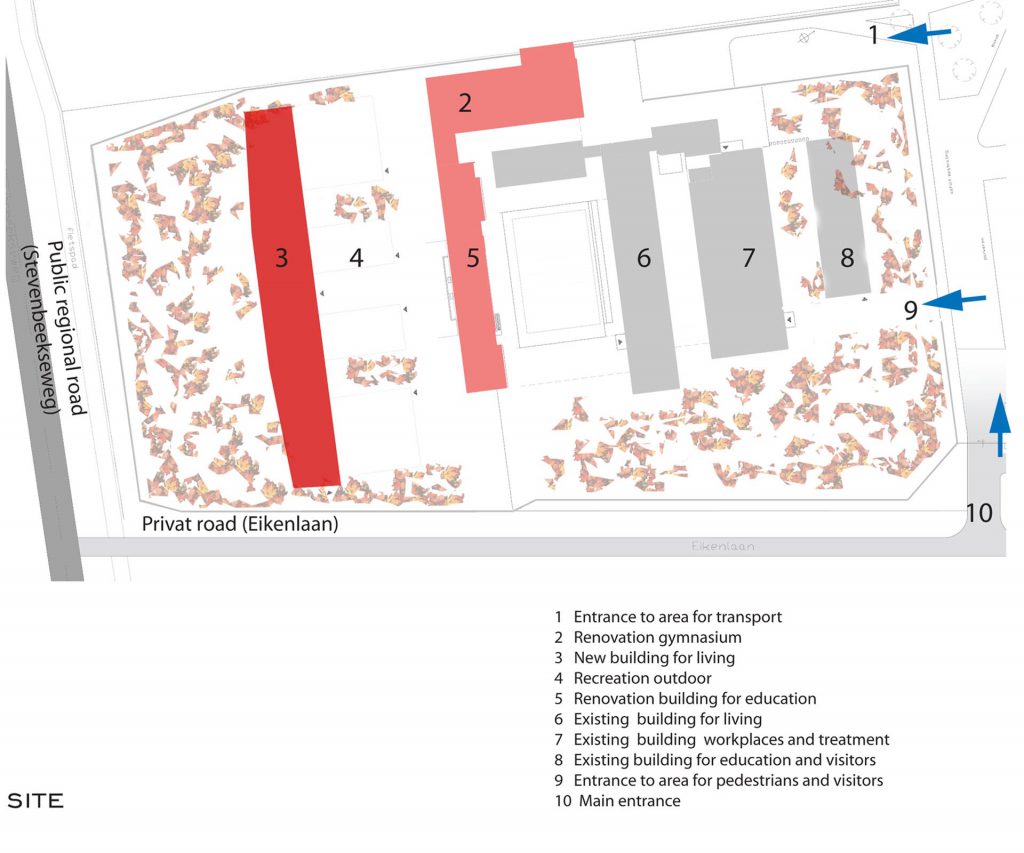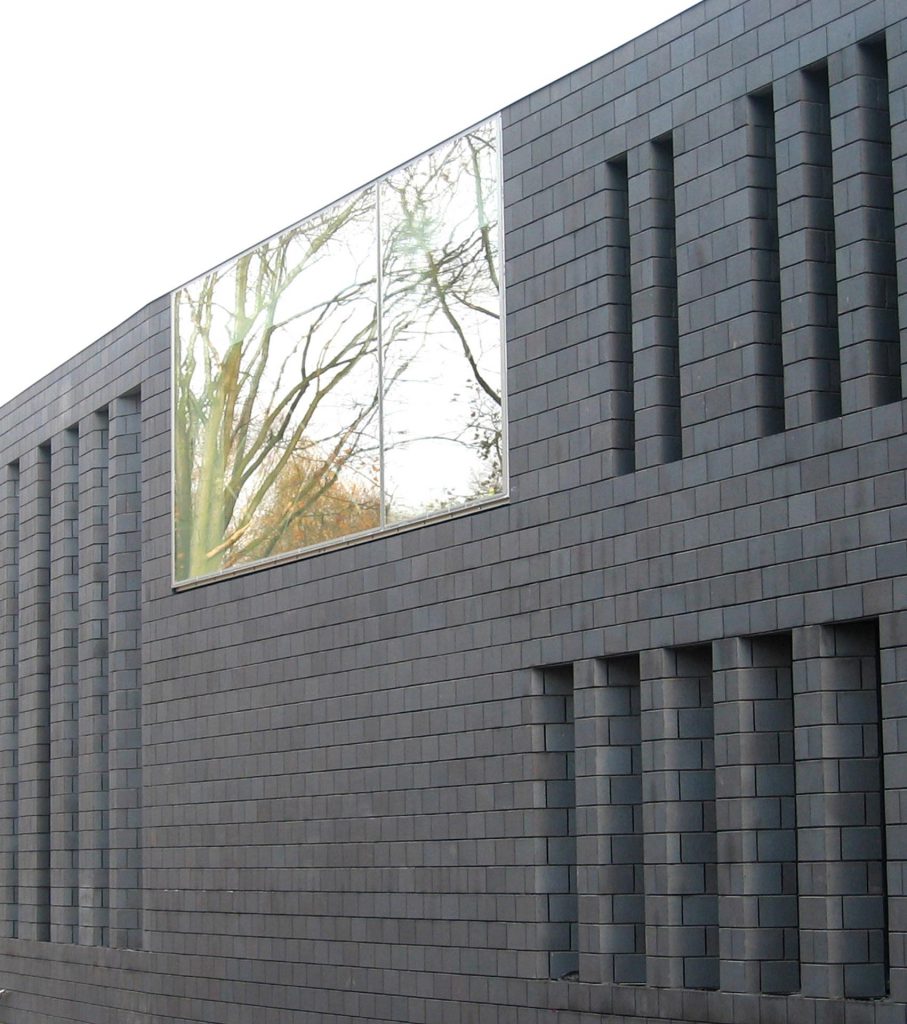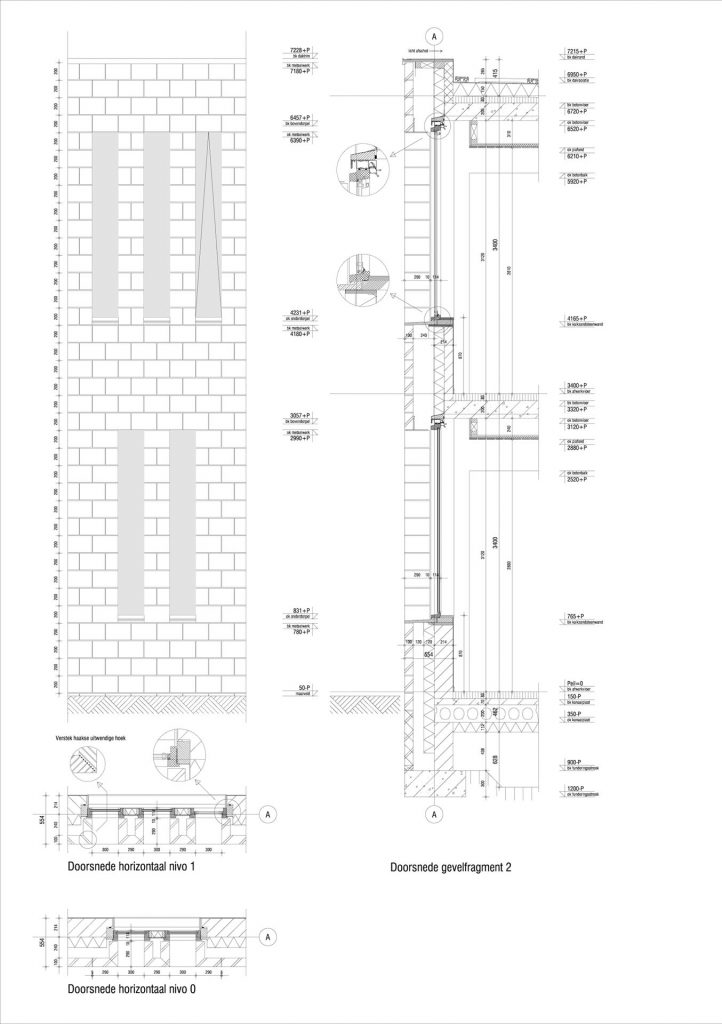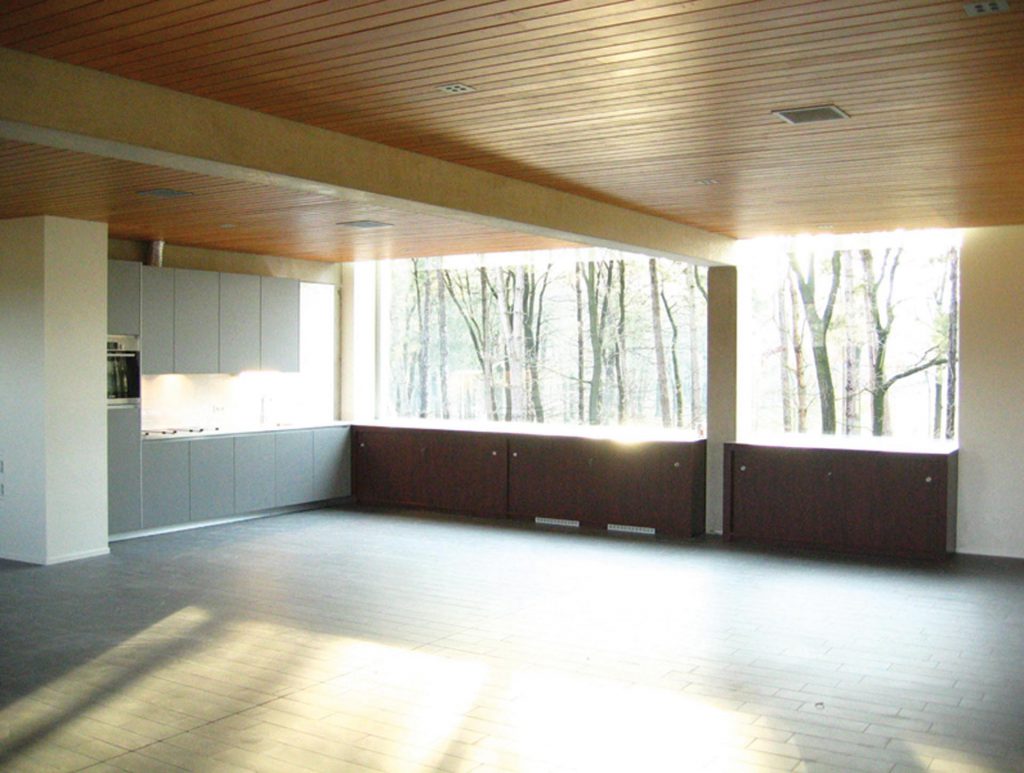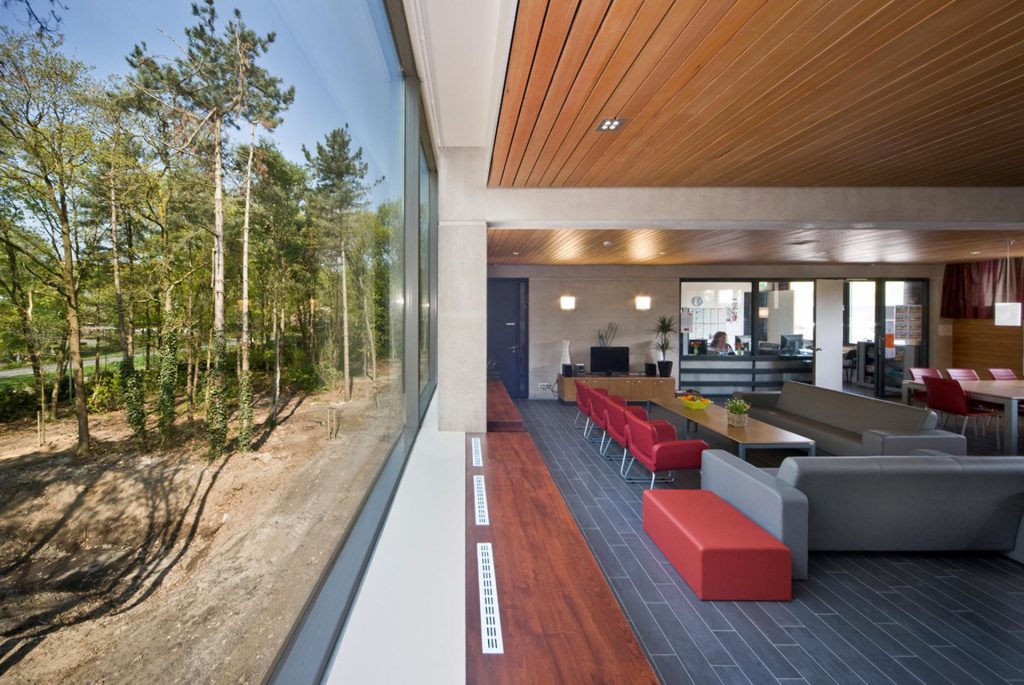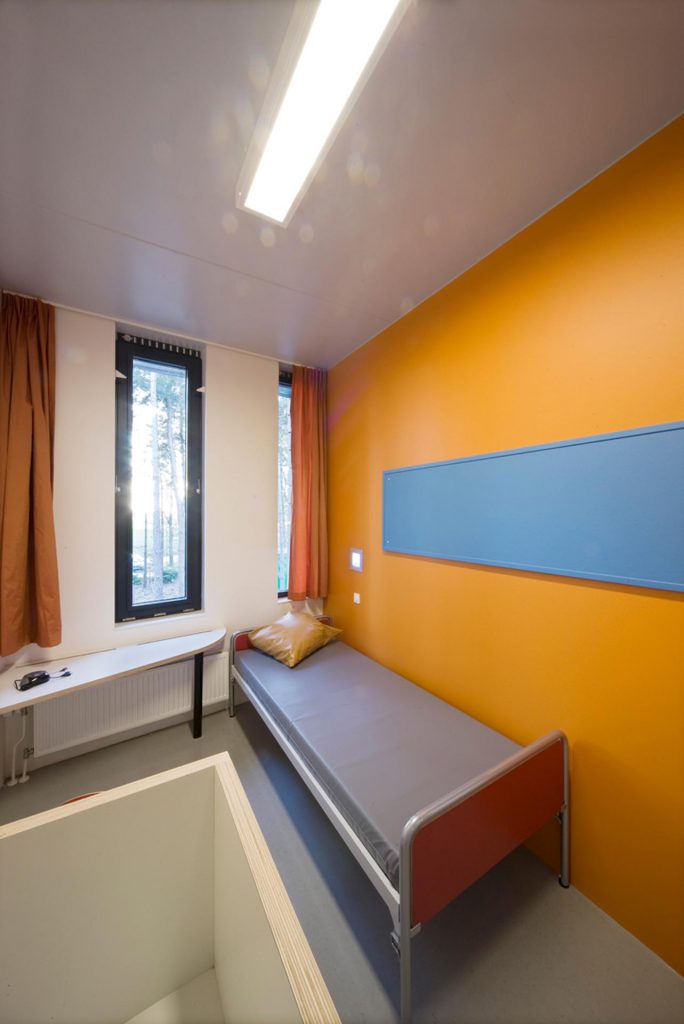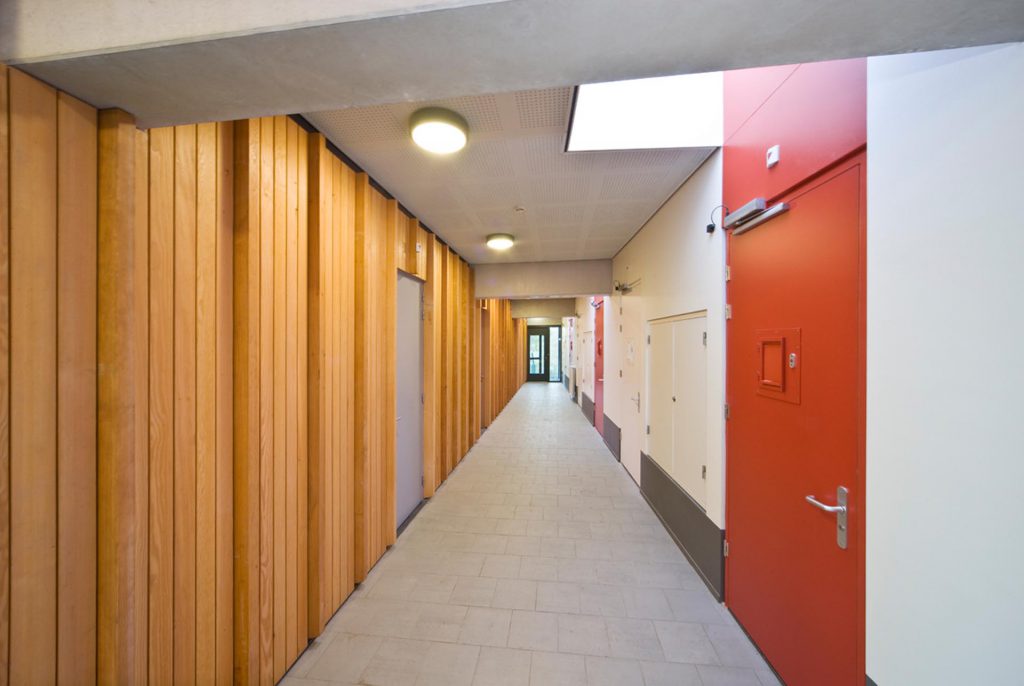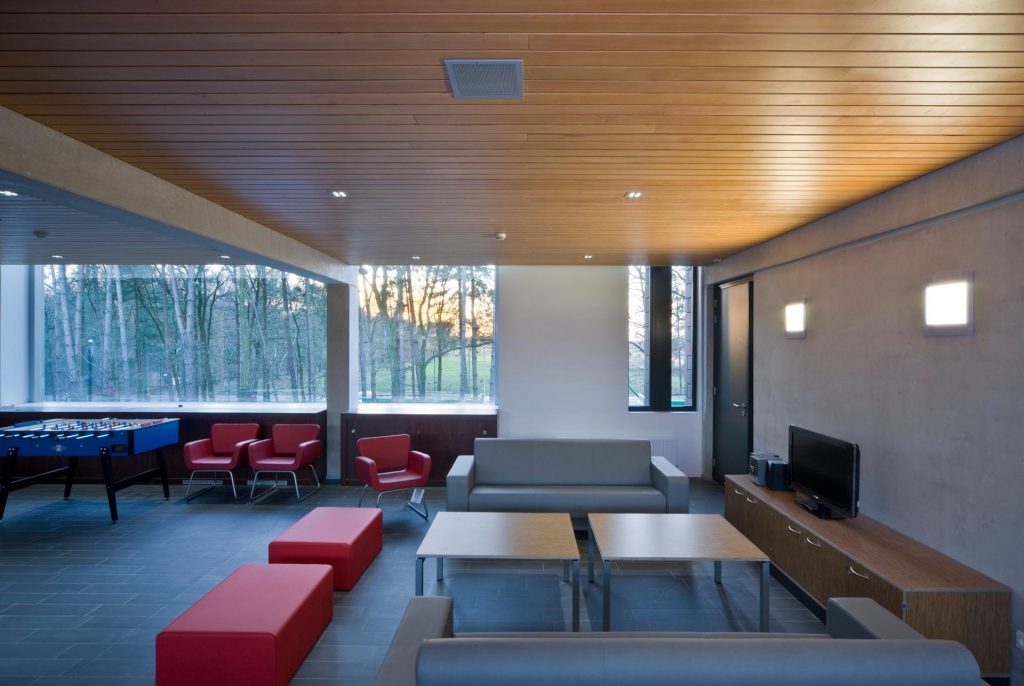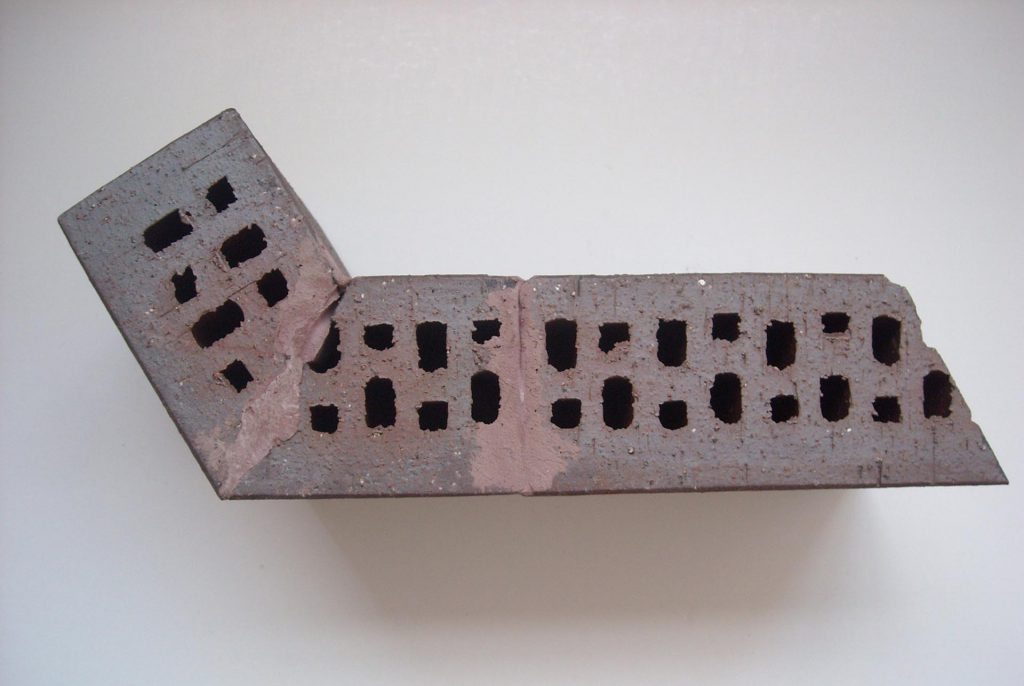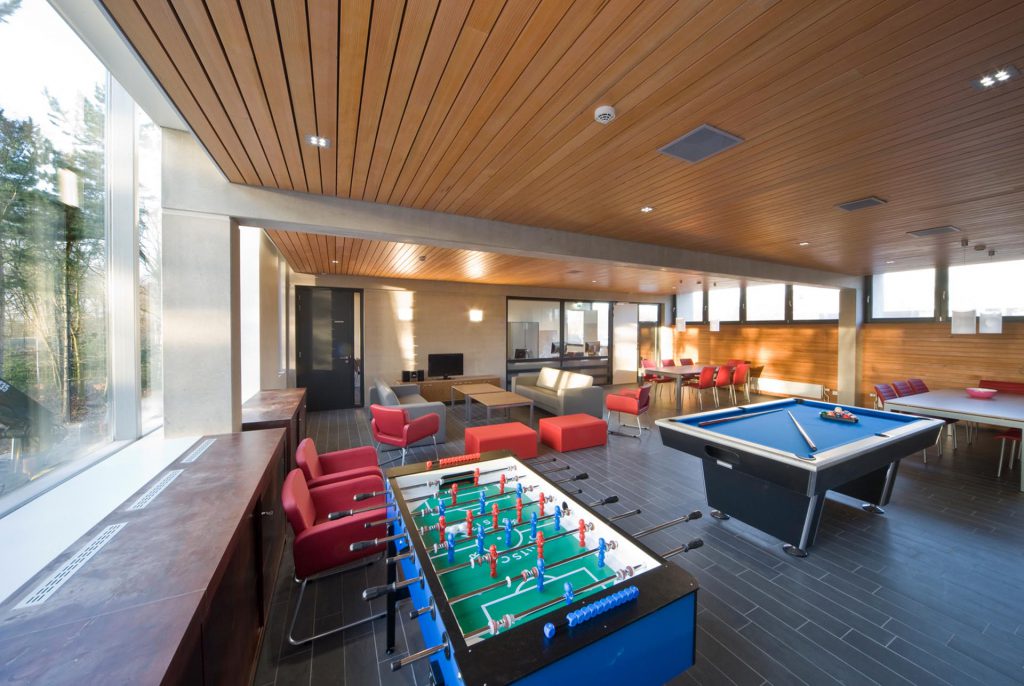Juvenile Detention Living, Netherlands
Unit 5 of “JJI De Hunnerberg, De Maasberg” in Overloon is converted from a prison for adults into an autonomously functioning juvenile detention institution. This is the first juvenile detention in the Netherlands where youngsters are treated in small groups of ten instead of twelve. So each youngster gets more treatment and coaching.
The old school is mainly demolished and partly renovated with the sports accommodation and a new building for the living area have been realised. This new building for living is the main part of the masterplan.
The resoluteness of the world which aims at the interior is partly removed. A new and more intensive interaction with the surrounding nature is aimed at for the youngsters. The open structure stimulates the daily shifts between living, learning and recreation.
The new building for living is situated parallel to the regional public road and contains 4 sectors with 10 youngsters each. In the longitudinal direction the building is organized linearly with bedrooms on the street side with an open view. The team rooms have been placed in the centre.
Some youngsters are staying in this building because they are themselves victim of lover boys or incest. Other youngsters are placed for means of punishment. The building for living area should provide the youngsters a place for protection. It is a temporarily home base for the youngsters. The façade of this home base is constructed with big dark-grey bricks (dimensions 290 x 195 x 90 mm), which express the solid social resistance.
The façade towards the street shows an abstract pattern of brickwork with vertical glass openings. Two enormous (maximum glass dimensions) glass openings are contrasting with this mainly closed façade and reveal the communal living rooms.
The building opens up to the other side with the enclosed outdoor spaces. Wooden facades and concrete planes reveal the atmosphere of the interior. The circular element on the south works on the urban scale as a turning point and it shows the entrance.
The vertical pattern of the glass openings are inspired by the rhythm of the surrounding trees. Each sleeping room is unique, just like each youngster is unique. This is emphasized by the different colors in the interior and the different windows. The vertical apertures have different bevel edges allowing the youngsters to have different sight lines to the surrounding wood land scenery. We had the idea that the stones should not be too smooth and shiny. That would not match with the texture of the surroundings and the youngsters. So we selected a brick with a the texture that has small vertical cuts and is relatively dark.
